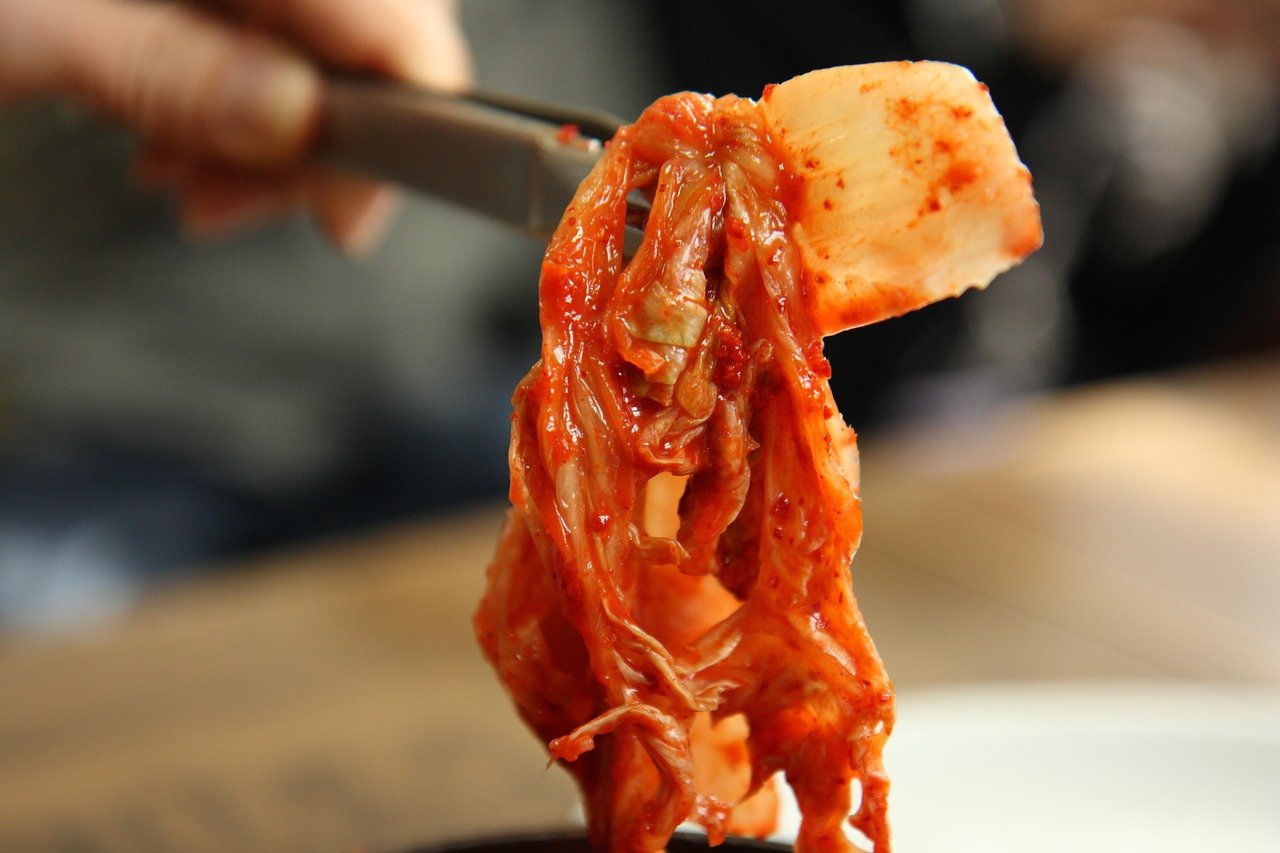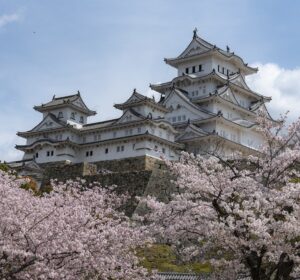If you’ve ever been to a Korean restaurant, you’ve no doubt tasted 김치 kimchi. It’s probably the most commonly known example of Korean cuisine, which is called 한국 요리 hanguk yoli or 조선 요리 joseon yoli. Kimchi is a kind of 반찬 banchan, a side dish served alongside the main dishes. Kimchi is made of salted and fermented vegetables, often 배추baechu (napa cabbage) and 무 mu (radish), seasoned with 파 pa (green onion), 고춧가루 gochugaru (chili powder), 마늘 maneul (garlic), and 생강 saenggang (ginger). There are hundreds of kinds of kimchi, some are very매운 maeun (spicy), and some not so much. Here are some of the more common kinds of kimchi you may come across.
- 배추김치 baechu kimchi: This is the quintessential napa cabbage kimchi, spicy and made from whole leaves.
- 백김치 baek kimchi: White kimchi, no chili pepper, mild.
- 총각김치 chonggak kimchi: Cubes of chonggak radish, spicy.
- 파김치 pa kimchi: Green onion, spicy.
- 깍두기 kkakdugi: Spicy cubes of Korean radish, with fermented shrimp for a particularly strong aroma.
- 오이소박이 oi-sobagi: Cucumber and chili, popular especially in the warmer weather.
Learn Korean with the Language Garage
Check out our other posts on Korean language, culture, and more. And if you’re looking for convenient and affordable live Korean lessons with a real teacher, check out The Language Garage. Our lessons are given online in a virtual classroom, so it doesn’t matter where you live or work – we can come to you. And we have flexible options, with a free trial so that you can decide if there’s a fit. Check us out!
Free Student Book and Audio
You can access our original student book and practice audio here. If you’d like to use it with an instructor, you can enroll in lessons. Or you can use it on your own as self-study, totally free. Enjoy!
Image by Dongtan Ko from Pixabay.





